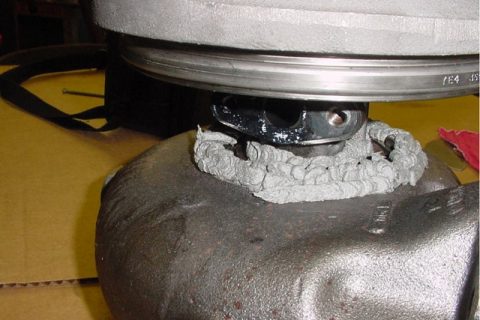When to Use High-Temperature Putty for Critical Repairs
February 1, 2023
Metals such as cast aluminum, cast iron, steel, and stainless steel have many industrial applications. They’re used for gears, valves, cylinders, ovens, furnaces, turbines and other applications. Therefore, it can be frustrating when cracks, corrosion, discontinuities, casting defects and other defects appear1. The costs of repairs can be enormous. There are the direct costs associated […]
Metals such as cast aluminum, cast iron, steel, and stainless steel have many industrial applications. They’re used for gears, valves, cylinders, ovens, furnaces, turbines and other applications. Therefore, it can be frustrating when cracks, corrosion, discontinuities, casting defects and other defects appear1.
The costs of repairs can be enormous. There are the direct costs associated with the replacement of equipment and parts. And the indirect costs associated with downtime, delays, unplanned overheads and possible litigation.
Although welding is a standard solution, it may not always be suitable and may even cause further damage. A high-temperature putty is the favored solution for repairing defects in cast aluminum, cast iron, steel and stainless steel in heat-intensive applications.
When to Avoid Welding
Often welding requires complete disassembly and removal of the part to a casting repair shop. Disassembly, transportation and re-machining significantly increase costs and downtime. A benefit of carrying out repairs in situ is that the technician can travel to the site with their tools, which then reduces labor costs.
Surface Preparation for Applying a High-temperature Putty
It is essential that all surfaces are correctly treated to facilitate a strong bond between the substrate and the high-temperature putty.
Clean all surfaces of oil, grease and dirt. Grind down sharp edges and irregular protrusions. Use mesh grit, a wire brush or an abrasive disc to rid surfaces of rust and other foreign substances. This will result in an increase in the adhesive area between the substrate and high-temperature putty.
For metals exposed to seawater or other saline solutions, you may apply a high-pressure water jet to surfaces and leave overnight. This will allow the salts to seep to the surface.
Thereafter, apply the putty as soon as possible to minimize the chance of re-oxidization, rusting or re-contamination.
Applying a High-temperature Putty
To ensure fitness-for-service, ensure that surfaces are adequately prepared, that the putty is mixed and applied properly, and that the bonded mixture is allowed to cure.
Ensure that the putty is
- Mixed at the correct ratio
- Applied to the substrate until surface thickness is restored
Also ensure that the manufacturer’s instructions are followed.
Benefits of a High-temperature Putty
A high-temperature putty reduces scraps and rejects. It seals micropores, porosities and hairline cracks reliably. In addition, it’s an efficient use of labor and materials.
A high-temperature putty:
- Has excellent adhesion to steel, iron and aluminum
- Has high resistance to corrosion, abrasion, acids, alkalis and other chemicals
- It is fast-acting, cost-effective and durable
- Facilitates in situ repairs
- Facilitates unplanned maintenance
- Limits repair costs
Key Takeaway
Aremco’s Pyro-Putty® is a high-temperature putty formulated using advanced organic and inorganic ceramic-based resins. It is resistant to temperatures up to 2,000 °F and is typically applied to heat treating, foundry, aerospace, automotive and power generation components.
References
- Henneberry, B Types of Casting Defects and How to Prevent Them. https://www.thomasnet.com/articles/custom-manufacturing-fabricating/types-of-casting-defects-and-how-to-prevent-them/


 +1 (845) 268 0039
+1 (845) 268 0039
